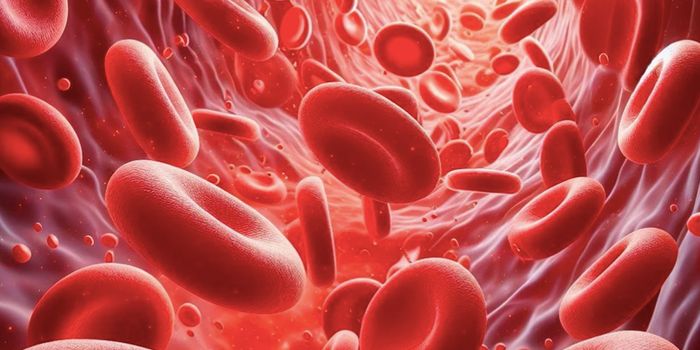Cancer
Technique Makes Cancer Glow to Improve Surgical Outcomes
AUG 06, 2014 12:00 AM PDT
Share
We Can Change the World. Oops!
 In a paper entitled, Concerning RNA-Guided Gene Drives for the Alteration of Wild Populations, recently published in eLife, a Harvard University research team (Kevin M. Esvelt, Andrea L. Smidler, Flaminia Catteruccia, and George M. Church) discusses a new technology, RNA-guided gene drives based on the CRISPR nuclease Cas9, that could genetically alter entire populations of organisms in the wild over many generations. Editing of genomes has been difficult and over time, natural selection tends to eliminated altered traits. This new approach seeks to make altered traits be favored by natural selection, thus allowing them to be sustained in the environment for longer periods.
In a paper entitled, Concerning RNA-Guided Gene Drives for the Alteration of Wild Populations, recently published in eLife, a Harvard University research team (Kevin M. Esvelt, Andrea L. Smidler, Flaminia Catteruccia, and George M. Church) discusses a new technology, RNA-guided gene drives based on the CRISPR nuclease Cas9, that could genetically alter entire populations of organisms in the wild over many generations. Editing of genomes has been difficult and over time, natural selection tends to eliminated altered traits. This new approach seeks to make altered traits be favored by natural selection, thus allowing them to be sustained in the environment for longer periods.Already in nature there are certain genes that "drive" themselves through populations by increasing the chance that they will be inherited. The researchers cite some examples: endonuclease genes that copy themselves into chromosomes lacking them; segregation distorters that destroy competing chromosomes during meiosis; transposons that insert copies of themselves elsewhere in the genome; Medea elements that eliminate competing siblings who do not inherit them; and heritable microbes such as Wolbachia.
The researchers propose creating engineered gene drives based on the process used by endonuclease genes. The new technology uses the "CRISPR" (clustered regularly interspaced short palindromic repeats) system to precisely edit genes. In a Scientific American blog post research team members state, "Since CRISPR can be directed to cut essentially any gene at a precisely determined location and works in every organism we've tested, CRISPR gene drives may allow us to spread nearly any type of genome alteration through many sexually reproducing populations."
Obviously this is a powerful technology that can be used to battle many problems facing mankind. Malaria kills about 650 million people per year. Controlling it and other vector-borne diseases by for example, replacing a mosquito gene needed for transmission of disease is one application that much research has been directed toward. Agricultural uses include making weeds more susceptible to herbicides and pests more vulnerable to pesticides. Gene drives could be used to quickly spread protective genes throughout species endangered by a natural threat such as a fungus. Invasive species such as rats, cane toads and lionfish are a major problem worldwide. It's estimated that the top 10 invasives in the U.S. along cause $42 billion in damages. RNA-guided suppression drives could be deployed against such species.
There are limitations on what gene drives can do. They cannot affect species that reproduce only asexually, so viruses and bacteria are not susceptible, nor are many plants, fungi and even some animals. Also, their changes are temporary. They can be used to spread desirable traits even if they are harmful to each organism, so, if given long enough, natural selection will undo our efforts. Finally, gene drives require many generations to spread, so populations of fast-reproducing insects can be changed in a couple of years, but for long-lived organisms changes would take decades or more. For humans it would take centuries.
For all of their promise, gene drives also pose great risks. They could cause widespread adverse ecological changes caused by accident or by malevolent intent. However, the researchers believe problems can be averted by taking certain precautions. Studies have shown that possible ecological effects can be examined by conducting contained field trials with organisms that contain a change, but do not have the functional drive to spread. The researchers also recommend that laboratories building standard gene drives (those that spread changes throughout a population) also create reversal drives (those that undo earlier genome changes). Also, suppression drives (those that reduce the number of organisms in a target population) and immunizing drives (those that immunize existing populations from being affected by other gene drives.) should be created. These precautions would allow the effects of an accidental release to be quickly counteracted.
Members of the research team believe that the ability to alter populations using gene drives "is around the corner," and that the consequences of their introduction are so far reaching that research on them should only proceed after a fully transparent review process. In the conclusion of the Scientific American blog they write, "Because we are all affected by the state of our ecosystems, public oversight of technologies capable of ecological management will be essential. We recommend that all future research involving gene drives and other technologies capable of altering populations and ecosystems be conducted in full public view, with all empirical data and predictive models freely and openly shared with the global community in a transparent and understandable format. Only through broadly inclusive and well-informed public discussions can we as a society decide how best to manage our shared environment."
You May Also Like
Loading Comments...








